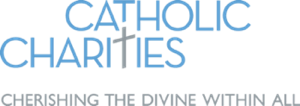![]()
Since the COVID-19 pandemic struck earlier this year, schools across the country have wrestled with complex criteria to determine when and how to resume in-person learning, poring over data and trends to make the safest decisions for students, teachers and staff.
At Villa Maria School, which serves children with significant emotional, behavioral and learning challenges, those decisions are even more complicated – and urgent.
“Our kids need to be in-person, the sooner the better,” said Agatha Callahan, associate administrator and director of education at the school. “They are suffering the longer this goes on.”
A flexible response – by necessity
Located in Baltimore County, Villa Maria serves about 90 students. They include residents of the nearby St. Vincent’s Villa, a comprehensive treatment center for children ages 5 to 14 whose behavioral and emotional needs require more than community-based services, and youth from five local Maryland jurisdictions who need a specialized learning environment.
Like most other schools in Maryland, VMS shifted to virtual learning last March, continuing to provide teaching through group learning and weekly one-on-one sessions. A fortunate decision made before COVID-19 facilitated that process: administrators had used surplus funds to buy a Chromebook for every student. As the devices arrived, VMS staff delivered them to children’s homes and ensured they were set up properly.
Over spring and summer months, Callahan and her team, which includes medical staff, twice began planning an in-person option for students. A shortened summer session was thwarted because state permission to reopen the building came too late. A hoped-for Aug. 26 return to school was later delayed because none of the school buses that transport children to and from their homes would be running – a decision made by local jurisdictions.
Instead, Villa Maria has held classes virtually five days a week since the start of the fall semester. Teachers, who work on-site most days, have taken trainings to enhance their use of available software. An online assessment tool, put in place before the pandemic, allows educators to see exactly how students are performing and where additional support is needed.
Above and beyond
Deep relationships among children, families and VMS staff have been vital to sustaining children’s progress throughout the year. Therapists and teachers conduct home visits to check on students. Through October, staff delivered weekly meals to families in need.
Parents have been happy with the support, Callahan said, recognizing that “the staff here are going … above and beyond what a typical school would do.”
While the system is working well, Callahan said VMS has been emphatically focused on getting kids back to school in person, recognizing the significant toll that missing class could take on them.
“We don’t yet know the real impact of them being out of structured education for nine months,” she said. “We had increased hospitalizations and lots of emergency calls to our therapists. Every day that we’re not doing [in-person learning] is hard.”
Thwarted by metrics
Earlier this fall, VMS began targeting Nov. 9 as the date for students’ return to the building. VMS administrators planned to split the children into cohorts – one from St. Vincent’s Villa and the other including all other students who come in from surrounding communities – with each spending two days on campus and learning remotely on the other three.
One week before the scheduled opening, Callahan said she walked through the facility with Catholic Charities’ medical director to finalize details. “We were so excited about the kids coming back,” she said.
But over the next two days, key COVID-19 metrics – including those measuring positivity rates and new case counts – began to jump dramatically in Maryland. VMS made the painful decision to postpone the return to in-person learning, again.
“We knew it was going to keep climbing,” Callahan said of the statewide case count. “We didn’t want to open with [COVID-19] exploding. It didn’t feel right… I think it was the right decision, it was just tough to make.”
Planning a return
The school’s new goal is to bring students back to campus through a hybrid model on Jan. 20, a few weeks after the holidays, even if the COVID-19 metrics are higher than ideal. The school will continue to work with families – those that are “desperate for us to open” and those expressing reservations about returning to class – to support any decisions they make for their child, Callahan said.
She emphasized that the children themselves are trying in unexpected ways to make this unusual format work.
“You would be surprised, knowing that our kids are oppositional, defiant or sent here for behavioral issues. The majority of our kids show up every day on our screens. They want to see our teachers. They want to come to virtual school,” Callahan said. “We thought we’d have more work avoidance … but they show up and they’re doing the work.”
